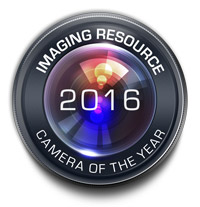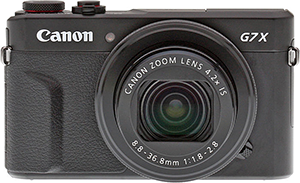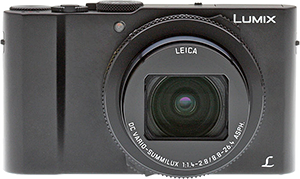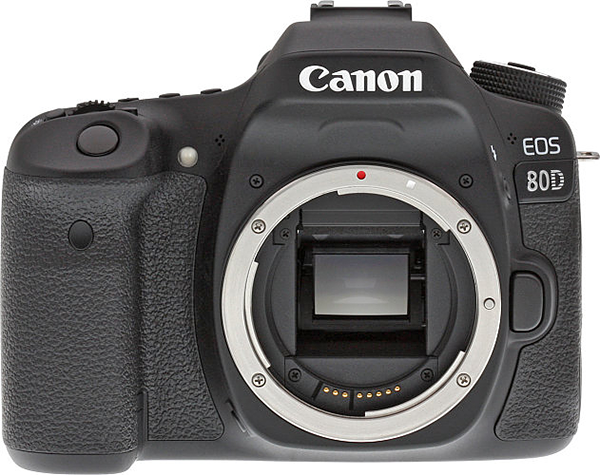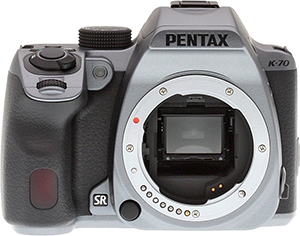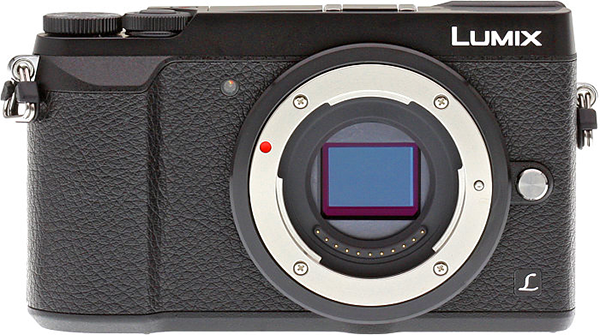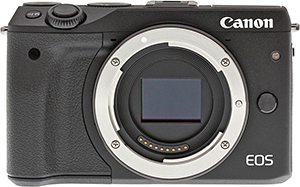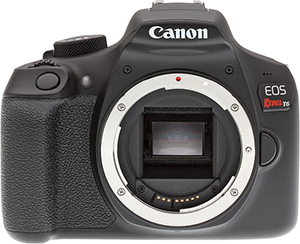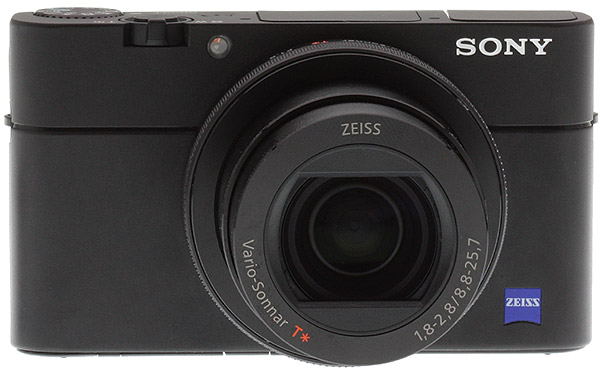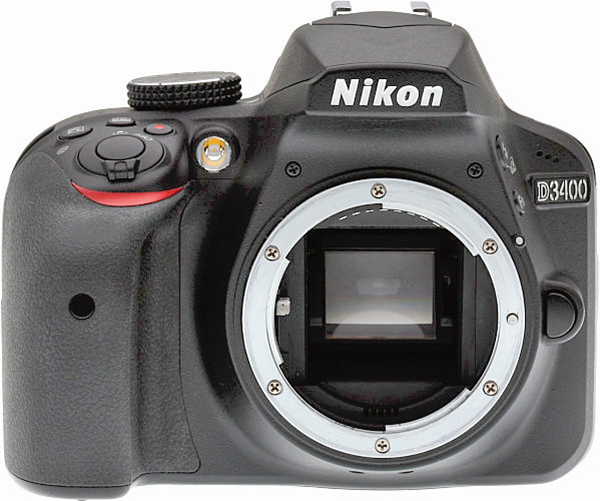Camera of the Year 2016: Best Premium Compact, Intermediate and Entry-Level Cameras
posted Monday, December 19, 2016 at 3:00 PM EDT
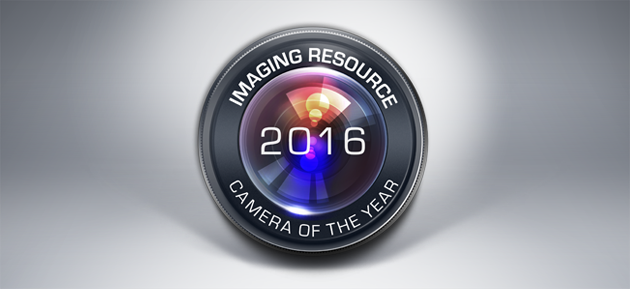
Over the past few years there have been very few camera categories on our site as popular as the Premium Compact segment. That category caught on fire with the release of the Sony RX100 back in the spring of 2012, and has been all the rage ever since with the enthusiast crowd looking for a capable compact for times when they don't need their larger rig. Quoting our review from the RX100: "Sony finally did what so many of us have wanted: They've built a pocketable camera with a large sensor and a bright lens... and it'll send other camera makers back to their drawing boards..."
Indeed, other camera makers have now entered the Premium Compact fray and the competition has become as fierce as ever. Can Sony maintain its dominion at the top of the Premium Compact mountain? Read on to find out! We also have a nice sampling of the best models from the ranks of the popular intermediate and entry-level camps from 2016 to round out this fourth Camera of the Year article.
Camera of the Year, Best Premium Compact: Sony RX100 V
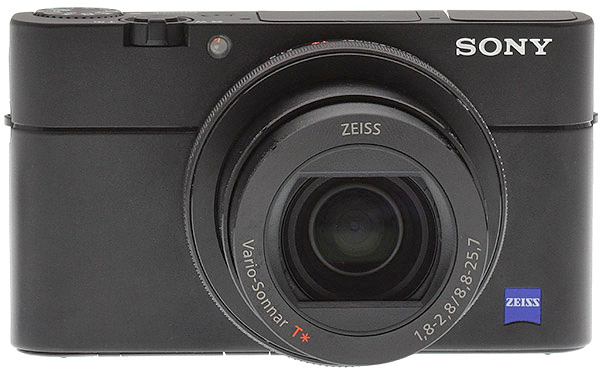
The Sony RX100 V is that rare camera which is simply unrivaled. In a compact camera market rife with me-too products that can barely be distinguished from each other, the RX100-series has long been known for its pairing of great image quality and top-notch performance in a tiny, pocket-friendly package. Now, the RX100 V takes that to the next level with a performance upgrade that simply defies belief. This tiny little shooter packs amazing performance into a body so small you can forget you're carrying it, and will blow away even your interchangeable-lens camera when it comes to capture speed.
The RX100 V's legendary performance comes courtesy of a new front-end LSI chip as seen in some of Sony's other recent cameras, along with a new image sensor and autofocus system. Although resolution is unchanged, the RX100 V's sensor now includes 315 phase-detection autofocus pixels which are used in concert with 25 contrast-detection AF areas to provide a hybrid autofocus system which is fast enough to keep up with the RX100 V's epic 24 frames-per-second full-res burst rate.
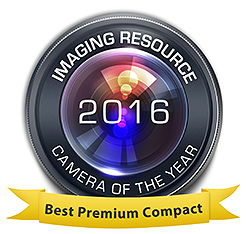
And the new hybrid autofocus system isn't just for stills shooting, either. The Sony RX100 V packs in enough power to allow continuous autofocus during movie capture -- and that's true even when shooting at the maximum 4K ultra-high-definition resolution. Here, the RX100 V actually oversamples the data required for 4K video by about 1.7 times, reading off almost the full sensor width and then downsamples to 4K resolution for the maximum possible quality. And while the RX100 V also retains the incredibly fun High Frame-Rate modes introduced in its predecessor, it can now record each clip for twice as long as before.
All of this, and yet the Sony RX100 V is no larger than its predecessor. No question about it: The Sony RX100 V is truly a pocket powerhouse, and one of our absolute favorite cameras of 2016!
Camera of Distinction, Premium Compact: Canon G7X Mark II
Canon had big shoes to fill when it debuted the original G7X, taking on Sony's highly-popular RX100-series. The original bested the RX100 with more zoom reach and a brighter maximum aperture. It did, however, fall short with a few performance missteps. We were pleased to see, though, that the updated Canon G7X Mark II addressed some of the original downsides while maintaining the features that made the original great.
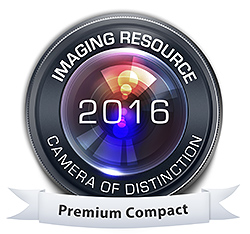
While the Mark II keeps the same 24-100mm equivalent f/1.8-2.8 lens and very good 20-megapixel 1"-type sensor, the faster DIGIC 7 image processor not only lets it capture excellent images, but also speeds up performance. Burst performance is much improved, especially with RAW files -- going from just 1.2fps to over 8fps! We also see improved AF speeds, better high ISO performance and updated 14-bit RAW quality. The camera body also gets a few tweaks, most notably an improved grip for better handling. All in all, the G7X Mark II is a very solid, highly portable and very versatile premium pocket camera.
Camera of Distinction, Premium Compact: Panasonic LX10
Panasonic’s LX10 is their answer to the Canon G7X and Sony RX100 series of premium fixed-lens compact cameras and it has proven to be a very good one. The 20-megapixel 1"-type sensor compact combines a 24-72mm equivalent f/1.4-2.8 lens with an excellent suite of features to create a compelling compact that blends performance with value, earning it a well-deserved Camera of Distinction Award in our Premium Compact category.

This sleek compact impressed us with its fast built-in lens and impressive image quality, but what helps it stand out are its 4K features, including 4K UHD video recording and an array of 4K Photo modes. This powerful, pocketable camera earned this award in 2016 filled with terrific compact cameras, and it certainly stands out as one of the best of the bunch.
Camera of the Year, Best Intermediate DSLR: Canon 80D
Sometimes, the tried-and-true way is the path to success, and that's the case with the Canon 80D. The 70D successor is a solid, well-built, well-rounded multimedia DSLR. Its ergonomics and design are classic Canon, which translate to easy, comfortable functionality with tons of external controls. Thanks to its improved, higher-resolution 24-megapixel sensor, the 80D now competes more comfortably against rival APS-C cameras, and results in excellent, highly detailed images.
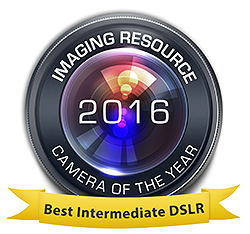
Our testing also showed improvements to shadow noise and better high ISO performance, especially in RAW files. Although its burst rate is similar to the 70D, the Canon 80D gained a larger buffer for more continuous shooting capabilities. The camera also received a noticeable upgrade in the AF department, going from a 19-point system to a more versatile 45-point one. Maintaining the same Dual Pixel CMOS AF technology as its predecessor gives the 80D an excellent live view shooting experience for both stills and video, making the 80D an excellent choice for the multimedia shooter.
All in all, while the Canon 80D feels more evolutionary than revolutionary, it's an all-around excellent DSLR with a good combination of image quality, sophisticated features, great build quality, and a good price point. It's a big step-up from an entry-level DSLR, and while it's still easy to use, it offers a lot of higher-end features for the more advanced photographer.
Camera of Distinction, Intermediate DSLR: Pentax K-70
Ricoh's Pentax brand has built quite a reputation for offering quality camera gear at a really impressive pricepoint. The incredibly well-equipped Pentax K-70 is no exception to that rule. It offers a raft of features its similarly-priced rivals lack, like a bright pentaprism viewfinder instead of a dim pentamirror, and an intuitive twin-dial design instead of a clumsy single-dial layout. It also sports a comprehensively weather-sealed body (doubly impressive given the presence of a tilt/swivel LCD monitor), and can be bought with a weather-sealed travel zoom kit lens too, if you like.
It also bests its nearest rivals by a good frame per second in terms of burst performance, and for relatively still subjects can even boost resolution courtesy of its clever Pixel Shift Resolution function. Yet even though it includes so many features which aren't traditionally associated with such affordable cameras, the Pentax K-70 actually sells for a little less than its nearest rivals!
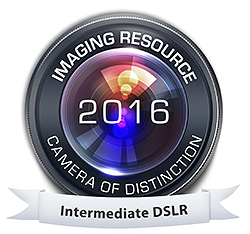
That's not to say the K70 is perfect, by any means: The in-camera Wi-Fi is clumsy and unreliable, although it can be worked around with a Wi-Fi equipped SD card. Nor is its newly-developed movie autofocus system yet ready for prime time, and battery life also trails the current state of the art. But where it really matters for still image shooters, the Pentax K-70 delivers, and then some. Image quality is excellent at base sensitivity, and even when you crank the sensitivity up to ISO 12,800 or 25,600 equivalents, usable shots are still to be had. Ergonomics are great, and Pentax's impressive backwards compatibility gives you access to a world of interesting second-hand optics.
If you want a camera which offers huge scope to grow with your photographic skills, yet which won't break the bank, you'd be very well advised to take a look at the Pentax K-70!
Camera of the Year, Best Intermediate Mirrorless:
Panasonic GX85
The Panasonic GX85 -- also known in some markets as the GX80 or GX7 II -- is a camera of many names, and just as many possibilities. Inside a solid, well-built and very compact body, the GX85 packs a mighty punch with a whole raft of important features. There's a built-in electronic viewfinder, a tilting touch-screen display, a built-in flash and a hot shoe. There's also in-camera Wi-Fi wireless networking, and a five-axis Dual Image Stabilization system which works not just for still imaging, but also for movie capture.
And speaking of video capture, there's support for 4K movie recording in-camera, too. Better still, in US market cameras, there's no artificial clip length limit for the 4K option. Many cameras limit you to a sub-30 minute clip length to avoid European taxes, even when the camera is actually being sold outside of the European market. Returning to still imaging, the Panasonic GX85 offers very good image quality, especially when using the RAW file format. Detail gathering is rather better than its 16-megapixel resolution might suggest. That's achieved at least in part due to the removal of the optical low-pass filter found in earlier models, but thankfully the GX85 didn't seem overly prone to moiré or false color in our testing, even with that filter removed.
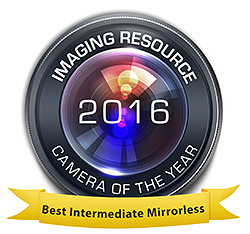
And there's also plenty of performance on offer in the Panasonic GX85. You can shoot full-resolution JPEG images for as long as there's card space remaining, if your flash card is up to the task. And with an electronic shutter, that can be boosted to a very swift ten frames per second. RAW shooters, meanwhile, will find very generous burst depths of around 40-50 frames, depending upon camera setup. Autofocus performance is also very good, especially when one bears in mind that this isn't a hybrid system, but rather relies solely on contrast detection.
All of this in a camera which can easily fit in a small bag or coat pocket, once the lens is removed. No question about it: The Panasonic GX85 is small, serious and a whole lot of fun!
Camera of Distinction, Intermediate Mirrorless: Canon EOS M3
As Canon continues to improve their mirrorless lineup, the Canon EOS M3 represents a massive improvement over the original M. It packs a 24-megapixel APS-C sensor into a compact, yet comfortable mirrorless camera body. While lacking a built-in electronic viewfinder, the M3 can be purchased with an optional hot shoe EVF for a surprisingly low price (currently under US$500), making it not only a good performer, but a great value as well.
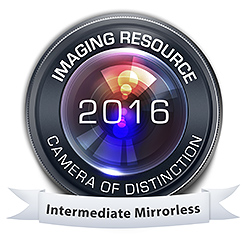
During our time with the Canon M3, it impressed us with its image quality, improved autofocus performance and usability, earning it a Camera of Distinction award in the Intermediate Mirrorless category for 2016. We believe that the M3 represents an important step forward in the M lineup, addressing many of the usability and performance drawbacks of the original EOS M camera.
Camera of the Year, Best Entry-level DSLR: Nikon D3400
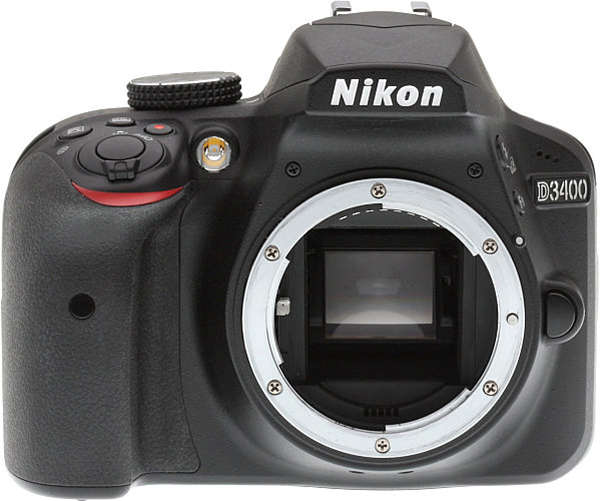
If you're looking to purchase your first DSLR, you have many options, but in our opinion, the Nikon D3400 is the best one in 2016. This follow-up to the D3300 may not add many features and in fact loses some, but it does improve in the image quality department, offering what we believe is the best image quality in its class. It also includes built-in wireless connectivity through Bluetooth Low Energy, which lets you automatically send photos over to your smartphone for easy sharing.
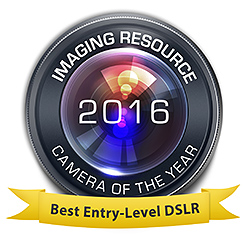
The D3400 uses a very good 24-megapixel APS-C sensor, which produces high-quality images across a wide range of situations. This great image quality doesn't mean much if the camera isn't easy to use, which it fortunately is. It also includes a lot of shooting modes to help photographers learn how to use the camera and bring out its best. Alongside the D3400, Nikon also introduced a new AF-P 18-55mm kit lens, which offers much faster, smoother and quieter live view and video autofocus than its AF-S predecessor.
Overall, the Nikon D3400 is an excellent entry-point for photographers looking for their first DSLR and is very deserving of this award. If you’re looking for a great value and even better image quality, the Nikon D3400 certainly fits the bill.
Camera of Distinction, Entry-level DSLR: Canon T6
For those out there who want to upgrade their picture-taking equipment beyond their smartphone or point-and-shoot camera, the Rebel T6, Canon's most entry-level DSLR, offers a great combination of solid image quality, comfortable controls, ease of use and a highly affordable price point.
Though it shares many features with its predecessor, the Canon T5, including its 18-megapixel APS-C sensor, the new T6 now offers built-in Wi-Fi and NFC wireless connectivity, gains a much nicer, higher resolution LCD screen on the back and an updated DIGIC 4+ image processor.
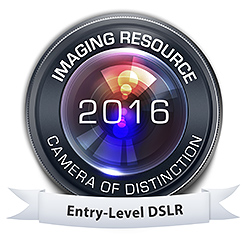
The tech- and specs-focused staff here at IR, as well as number of our enthusiast readers, might not get excited about a camera like the Canon T6. After all, it is a rather basic DSLR. But, as an entry-level model, it fills a role and does it quite well; user reviews seem to back that sentiment, as well. It's not flashy, fancy or super-advanced, but rather, it's a straightforward, no-frills, super-affordable entry into the world of DSLRs. If you're looking for a new camera -- one which shoots better photos than your smartphone or compact camera -- and want to jump up to a DSLR camera, the Canon T6 is a great choice.
Imaging Resource Camera of the Year Awards 2016
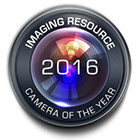
Best Overall
Best Professional and High-End Cameras
Best Enthusiast Cameras
Best Premium Compact, Intermediate and Entry-Level Cameras (current page)
Best Prime and Zoom Lenses, Technology and more!
